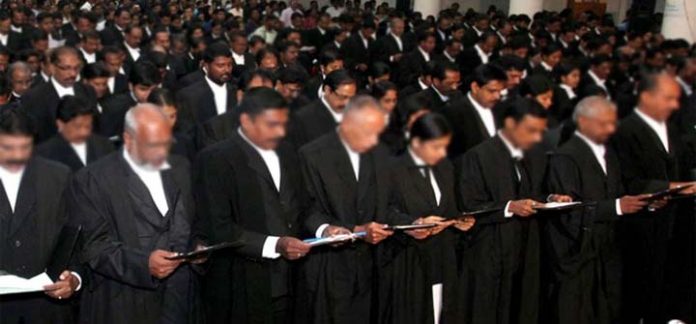This article has been written by Diya Banerjee, Symbiosis Law School, NOIDA. The article answers all possible queries about the Advocates’ Welfare Fund Act of 2001.
Table of Contents
Introduction
Why do you think a welfare fund is important? What purpose does it serve? Any welfare scheme is started by a government to provide support to the workers for whom the scheme or fund has been initiated. The support can be for any income group and includes social security and basic human needs for money, food and shelter. It is an attempt to provide a basic sense of well-being to the members of the scheme. The members are also provided with opportunities to train and acquire practical and on-the-job skills so that they become self-sufficient.
Now, we often hear the phrase the ‘Welfare State’. It is a system where the State undertakes the duty to provide support to its citizens through means of subsidies, pensions, free vocational training among other benefits. Simply put, it is a country with a system of welfare. India is also a Welfare State, as reflected by the Directive Principles for State Policy from Article 36 to 51. DPSPs are not enforceable by law but they do provide a skeleton within which these principles should be followed for India to enshrine welfare, socialist values. Article 38 of the Indian Constitution clearly states that the State shall work actively to promote the welfare of its citizens. And as it should, the Central Government sets aside a considerable portion of its annual budget for various welfare schemes and the State government and local governmental bodies facilitate in implementing the schemes. One such welfare fund is the Advocates’ Welfare Fund Act passed in 2001 as central legislation among various other such legislations.
All that you need to know about the Act
Advocates’ Act was the first Act which consolidated and regulated the legal profession. It provides for the constitution of Central and State Bar Councils to regulate the profession. The Act provided for the State Bar Councils and the Bar Council of India to create one or more funds through their roles to “financially assist the indigent, disabled and other advocates”. It further states that any grants, donations, monetary contributions which may be received by the State Bar Councils and the Bar Council of India for the purpose of the fund shall be credited to the fund. However, it does not provide for welfare stamps nor for compulsory membership, which has been seen as the biggest loophole in the entire making of the Act.
This 2001 Act is all about assisting and supporting advocates especially during periods like in pandemic where there is a high possibility that not-so-high-end advocates face cash-crunch or high bills for medical treatment. However, the Advocates’ Welfare Fund is not as simple as it seems on the face of it. It has its own share of sub-committees and procedures for registration.
Important questions to understand the scheme of the Act
These questions are the ultimate road to understanding the entire Act briefly but with clarity.
What do you mean by an ‘advocate’?
Under Section 2(a) of the Act, any person whose name has been enrolled in the State roll prepared and maintained by the State Bar Council and is a member with the State Bar Association or State Advocates’ Association. Under Section 2(i), the advocates who benefit from the fund are termed as “members of the fund”.
How is the Fund constituted?
Firstly, the fund is created by the government as given under Section 3 of the Act and then it is credited with the following subscriptions or mediums-
- 20 per cent of the amount received by the State Bar Council (Section 15)
- Other forms of contribution by the State Bar Council (Section 3(2)(b))
- Any voluntary donation made by the Bar Council of India, State Bar Association, State Advocates’ Association or any other institution or advocate or person to the Fund (Section 3(2)(c))
- Any amount donated by the Central or State Government to the Fund (Section 3(2)(d))
- Any amount borrowed by the State Bar Council for the purpose of the Act (Section 12(1))
- Sums generated by the sale of stamps (Section 26)
- Amount of application fee collected from registration to the Fund by the members
- Sums received from Life Insurance Corporation of India (LIC) or any insurance company on the death of any member (Section 3(2)(g))
- Interest or dividend generated from the return on investment from any portion or part of the Fund
- Annual subscription collected from members who are not Senior Advocates and Senior Advocates being Rs 50 and Rs 1000 respectively (Section 18(5) and Section 18(5)(Proviso)).
What is a Trustee Committee and its work: Elaborated and explained
A trustee is given the task to control and administer property for the sole purpose for which it is created. A trustee can be an individual or an association of individuals. In many bodies, the Trustee Committee is treated just like the Board of Directors. They are responsible for all kinds of transactions to and from the Fund and keeping a check on the status and position of their members.
Formation and Constitution
The Trustee Committee is created under Section 4 of the Act. Its constituents are-
- The Chairperson is an Advocate General of a State. If there is no Advocate General of a State then the appropriate government has to appoint a Senior Advocate to be the Chairperson.
- The Secretary to an appropriate government in its Law Department or Ministry.
- The Secretary to an appropriate government in its Home Department or Ministry.
- The Chairman of the State Bar Council.
- A government Pleader or Public Prosecutor as nominated by the appropriate government .
- Two advocates as nominated by the State Bar Council.
- The Secretary to the State Bar Council.
All the members are ex officio except the government pleader or public prosecutor and the two advocates who are nominated by the appropriate government and State Bar Council respectively.
Tenure and Meetings
- The Chairperson is to hold the office for a period not exceeding three years from the date of taking over the office.
- All members of the Committee have to hold their office for a period not exceeding three years from the date they take over the office.
- The Committee shall meet every three months in a calendar year and that should total to four such meetings in a year as given under Section 8.
Main Functions
- The primary function is to administer the fund;
- To maintain and hold the accounts and assets of the fund;
- Receive applications for the fund and can dispose of them within 90 days from the receipt;
- Receive applications from the members or their legal heirs for the payment of the fund and after proper inquiry and finding it inappropriate, can dispose of the applications within 5 months;
- Sending periodical and annual reports to the appropriate government and the State Bar Council;
- Keeping a record of the applications and communicating regarding the same to the applicants.
How can a member of the Committee be removed?
There are two grounds upon which a member of the Trustee Committee can be removed-
- If that member has been found to be either insolvent, physically or mentally incapable to perform as the chairman or member, or has been convicted of an immoral offence;
- If a member has been absent without leave for three consecutive Trustee Committee meetings, provided that the Committee may condone the absence on certain legitimate and sufficient grounds.
Duties of the State Bar Associations and State Advocates’ Association
- Every State Bar Association and State Advocates’ Association shall, on the 15th day of April, present a list of all its members as of 31st March of that year to the State Bar Council.
- Every State Bar Association and State Advocates’ Association shall notify the State Bar Council of the following information-
- Any change in the membership including the admissions and readmissions within the thirty days of that change;
- The death or any cessation of practice or voluntary suspension of the practice of any of its members within the thirty days of its occurrence.
Welfare Fund Stamps
Section 26 and Section 27 deal with the various provisions with respect to the Advocates’ Welfare Fund Stamps. These stamps are used for Vakalatnama. A Vakalatnama is a document by which the party filing the case authorizes the Advocate to represent on their behalf. As per Section 2(u) of the Act, it includes a Memorandum of Appearance and such documents empowering him/her to plead before a court or tribunal. The value of the stamps being used range from Rs 5 to Rs 25, depending on the nature of the court before which the advocate is to represent.
- Rs 5 stamps are affixed on the Vakalatnama if the case is filed either in a District Court or a court subordinate to District Court.
- Rs 25 stamps are affixed on the Vakalatnama if the case is filed in a higher tribunal or authority or a High Court or the Supreme Court. Before the 2019 Amendment regarding the Advocates’ Welfare Stamps, the value of a stamp on a Vakalatnama filed in any tribunal, the High Court of Delhi and the Supreme Court were Rs 10.
Conclusion
The Advocates’ Welfare Fund Act, 2001 had raised a myriad of questions which somehow were never really answered. What does the Advocates’ Act 1961 have to say about it? Is the levy of the Welfare stamps justified? Is it not another form of vote bank politics at work? And why only lawyers, what about other professional fields like doctors, engineers, chartered accountants? And most importantly, what about the poor and needy? The Advocates’ Act says nothing about levying charges for the welfare stamps, not even a single mention of compulsory membership. There really was not a need for separate central legislation when the Advocates’ Act was doing the job of efficiently regulating the legal profession. Moreover, the stamps are a necessity for vakalatnama which ends up forcing the clients to pay for the stamps that go on to contribute to the fund. Ironically, there is a Section 27(2) which clearly states that a client should not have to bear the cost of the stamp. On a side note, even if there is no problem with the scheme for lawyers, what about the poor who are in a dire need for upliftment. There is no reaction from the government other than yelling slogans and running fruitless election campaigns.
The answers to these questions end up counter-questioning the entire purpose behind the formulation of the fund but there is no one to be held accountable and answerable for them. The overall lack of transparency in not only the Act but its execution as well makes it hard to not question the overall, actual implementation which has influenced the bigger picture painted by the legal profession.
References
- Salian, Sushant. (2008). The Advocates’ Welfare Fund: Lawyers’ Fund or Lawyers’ Loot. Centre For Civil Society.
- https://www.latestlaws.com/articles/all-about-the-advocates-welfare-fund-act-2001-by-priya-shah/
LawSikho has created a telegram group for exchanging legal knowledge, referrals and various opportunities. You can click on this link and join:
 Serato DJ Crack 2025Serato DJ PRO Crack
Serato DJ Crack 2025Serato DJ PRO Crack











 Allow notifications
Allow notifications



